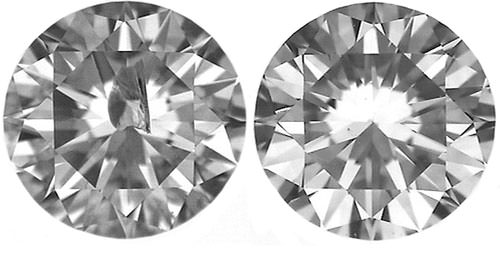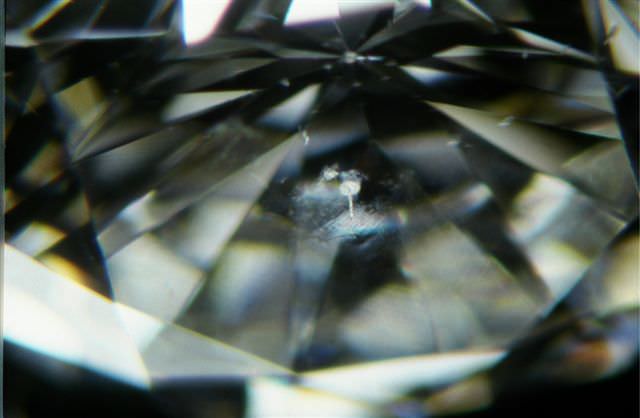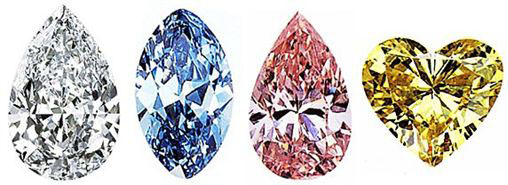-
GEMSTONE TREATMENTS
Gemstones have three signatures traits: beauty, durability and rarity. Many gemstones require only cutting and faceting to bring out their inner beauty, and others are subjected to additional processes, termed treatments or enhancements, to improve their appearance or durability. Treatments can be categorized in two groups: accepted legitimate practices and unaccepted. It is my experience that gemstones treated with unaccepted non-standard practices are often far from enduring and will likely end in your disappointment at some future time. This is never worth it, and thus, DEEDEE does not sell gemstones with unaccepted treatments even on client request. You should also be aware that even in the case of accepted practice when it is not required to inform the customer of the presence of the treatment, untreated gemstones carry a premium relative to the treated. This is most noticeably the case with heat-treated and untreated sapphire and ruby. Heat treatment is standard and assumed to have occurred; however, fine unheated stones are a great deal more valuable. Only in cases where virtually every stone is treated, such as blue topaz or amethyst, does treatment have no effect on price.
Having an awareness of all the kinds of treatments which may be present in gemstones, including those which are accepted practice, may be of interest and an overview of that is below. If you require more details, please get in touch.
The artificial enhancement of the colour and value of gemstones by dying and oiling lesser-valued gem materials has been known for thousands of years. Over time, rapid advances in techniques have resulted in many new colour enhancement technologies being used both legitimately and illegitimately on many gemstones. Treated gemstones are not inherently fraudulent, although they may be the subjects of fraudulent transactions.
International jewellery trade organizations, such as the European-based World Jewellery Confederation (CIBJO) protects against factors that threaten the confidence of consumers in the jewellery industry by supplying members with rules governing disclosure of treatments. At present, artificial treatment of gemstones to enhance appearance and value is accepted to be legitimate trade practice provided that: the changes are stable under normal conditions of display, wear and storage, and that no deceptive trade practices are used to market the gemstones. There are other treatments however which change the structure or colour of a gemstone by artificial means that are not accepted. These include fracture filling, laser drilling, surface diffusion and lattice diffusion. Such treatments are performed only occasionally on gemstones and because they have significant influence on gemstone value, may not be long-lasting, may require special care, and are not obvious to the untrained eye, these must be disclosed at all points of sale. The presence of unaccepted treatments, if undisclosed, may lead a consumer to falsely believe a gemstone is more valuable than it is therefore, each buyer must be made aware of the presence of such a treatment when it is present. It is never excusable to fail to disclose unaccepted treatments and any instance is considered fraudulent.
In general, diamonds, coloured stones and pearls which have been coloured or improved in colour by physical and/or chemical treatment, irradiation and/or coating must be designated as "treated" under the approved name of the gemstone. Exceptions include: heat treated ruby and sapphire, tanzanite, pink topaz, tourmaline, citrine and amethyst; irradiated blue topaz and amethyst; as well as minimally tinted cultured pearls that have undergone a permanent colour enhancement.
The industry policy on treatments is one of full disclosure in all transactions at all points in the supply chain and although established standards of consumer protection exist in many countries including Canada and the United States you should be aware that unethical sellers and those in other countries may not adhere to these standards. It is common in the tourist islands to sell gemstones with unacceptable treatments without disclosure because their jurisdiction does not require it.
Dyeing and Staining
The introduction of coloured dyes and stains is an ancient treatment dating back to the 1st Century AD. Lapis lazuli is often stained with Prussian blue, a synthetic blue pigment, to improve the look of material with many white spots. The colour is relatively permanent although it may wear off over time. Grey or white jadeite has been stained to an Imperial Jade colour by organic dyes. The colour is very convincing but the effect is not permanent as it has a tendency to fade in strong light, and after months even in the dark. Jadeite is also dyed mauve and in this case the colour tends not to fade. Organics such as ivory, coral and pearls are also commonly dyed. Dyeing and staining can be detected by a qualified gemmologist. The treatment affects value and must be disclosed. Exercise care with dyed stones around acetone, alcohol or acids which can readily damage or remove the colour.
Heat Treatment
Exposing certain gemstones to high temperatures can alter colour and/or clarity. Heating ruby can remove the purplish component leaving a more pure red. It can also remove minute needle-like inclusions, termed "silk", and improve clarity. With sapphire, heat can improve the blue colour as well as remove silk. Tanzanite is routinely treated to remove a brownish colour component and because tanzanite's natural conditions of formation involve high temperature this additional heating has little effect on value. Heating yellow-pink topaz can intensify pink colour. Heating removes brownish inclusions in some amethysts and can lighten the colour of dark stones. Aquamarine is commonly treated to remove the greenish component to the colour. Most citrine is heat treated amethyst. Tourmaline can be heated to make overly dark material more appealing. Reddish brown zircons can be heated to produce a range of commercially desirable colours including intense blue.
Variations of heat treatments have been performed for centuries. Today, the common commercial practices result in colour changes that are generally permanent and accepted by the trade; disclosure is not required as it is assumed to have taken place; however, certain gemstones - notably ruby and sapphire - carry a significant premium when they are certified as unheated.
Irradiation
Irradiation is the exposure of a gemstone to an artificial source of radiation to change its colour. It is one of the most important methods of colour change in gemstones and it is sometimes followed by heat treatment, or annealing as it is termed. Diamond was the first gem to be treated by irradiation at the turn of the 20th Century. Irradiation changes body colour by damaging the diamond crystal lattice altering its light absorption properties. Irradiation produces a limited range of colour: blue, blue-green and green, and irradiation followed by annealing is capable of a more expanded range of colours in diamond: yellow, orange, brown, pink, purple and red-purple. Irradiation treatment is irreversible and heat treatment is probably irreversible.

Irradiated blue diamond
Irradiation combined with heat treatment of colourless topaz can produce a range of desirable blue colours. Different varieties of quartz can be irradiated to produce amethyst. With beryl, colourless can be irradiated to turn yellow; blue can be turned green; and pale pink can be turned the deep blue maxixe colour. Creme coloured cultured pearl can be gamma irradiated to a grey-black colour. Colourless zircon can be irradiated to brown or red.
The strong blue of some irradiated topaz is unseen in naturals and thus, such stones are always assumed to be treated. This is also true for strongly coloured diamonds where often times the colour range is unnatural to the experienced eye. There are no special care requirements for most irradiated gemstones. Irradiation of blue topaz and amethyst is prevalent in the trade and disclosure is not required. Disclosure in the case of diamond is mandatory because of the tremendous difference in value between natural colour and treated colour diamonds. This is such an extreme difference that it is wise to assume treated colour until natural colour origin has been confirmed by an accredited laboratory.
Impregnation
Impregnation is the process of permeating the surface of porous gemstones with a polymer, wax or plastic to give greater durability and improve appearance. Lapis beads may be dipped in paraffin wax. It penetrates the grains and although it adds no colour it has the same effect as wetting the stone with water; it increases the saturation of colour and gives the appearance of a smooth, lustrous polished surface. Wax is also applied to penetrate the pores of turquoise; this reduces the light scattering from a porous surface and also protects the surface from acidic perspiration when the jewellery is worn. Wax is also commonly applied to jade carvings. Waxing is an accepted practice but if a colouring agent is added to improve the apparent value of poor colour material it is considered a fraudulent practice. Opal and turquoise are both stabilized by plastic impregnation. Light coloured fractured Brazilian opal can be coloured by impregnating it with a pigmented plastic under vacuum conditions to yield a variety of colours.
Impregnation treatments may or may not be stable. They are the most stable in turquoise but in other instances because plastics and wax have a low melting point gemstones may be easily damaged by heat. The treatments are easily detectable with expertise. Disclosure is required in all cases except that of colourless waxing.
Fracture or Cavity Filling
Fracture filling refers to the process of introducing a filler, typically glass, resin, wax or oil into surface-reaching fractures or cavities to reduce their visibility and improve the gemstone's apparent clarity, appearance or stability. In very rare occasions the process is undertaken to add fractional weight to a gem if it is just below the threshold of an important weight.
Oil and wax are used to reduce the visibility of cracks and surface reaching fractures in a number of gemstones including ruby, sapphire and emerald. Clear oil and wax are generally accepted, all emerald at a minimum is assumed to be oiled, but if a colouring agent is introduced in any of these cases it is no longer accepted.

Before and after of a fracture filled diamond in which the central high-relief inclusion is transformed into a low-relief light inclusion
Diamond can also be fracture filled. The process, involving a specialized glass compound infused into the openings, likened by some to filling cracks in a windshield, is capable of visibly minimizing certain types of surface-reaching fractures, yielding a diamond with more life and fire. The stability of the filler is variable. Glass is also used to fill ruby and sapphire and in some cases the amount of filler can be significant. This is also not accepted. Surface reaching fractures in emerald are often filled with artificial resins such as epoxy prepolymers to reduce the visibility of the fractures. The stability is variable and the amount of filler present can range from slight to significant. Such gemstones should not be subjected to heat or chemicals. Filled emerald may be damaged by hot water during bathing and washing dishes and has been known to show damage after changes in air pressure in an aircraft cabin. All fillers can be detected with a proper gemmological examination and with the exception of clear oil and wax the treatment is not accepted as standard and must be disclosed in all transactions.
Surface Diffusion
Surface diffusion is an enhancement in which certain chemical elements that cause color, such as chromium, iron and titanium are added during heating of the gemstone. These elements are the same as those that naturally create the colour in gems and the resulting colour appears natural. The most commonly treated gemstones are the corundums - ruby and sapphire - where these elements diffuse into the material, typically penetrating less than half a millimeter into the surface of the stone. Since the treatment is essentially a surface treatment the gemstones are cut first because polishing would remove the colour otherwise. Surface diffusion can create fine colored blue sapphire through the addition of iron and titanium, star sapphire through the addition of titanium oxide, and ruby through the addition of chromium. An experienced gemmologist is able to detect this treatment but it is not visible with the naked eye. Although the treatment is stable, special care is required because the shallow surface treatment may be damaged if scratched or repolished. Disclosure of treatment is a requirement.
Lattice Diffusion
Lattice diffusion refers to the penetration of the element beryllium into the atomic lattice of a gemstone to change or improve colour. Beryllium is an element that is a component of many gems such as emerald and alexandrite, but is usually not found in any significant quantity in natural ruby and sapphire. This is a relatively newer treatment that has been applied to ruby and sapphire since 2003. Similar to surface diffusion this process takes place in conjunction with heat treatment. But unlike surface diffusion the colour is not confined to the surface and actually penetrates the stone. The treatment temperature is very high, nearing the melting point of corundum (2044 ℃) and the longer the treatment is performed, the deeper the color will penetrate. Beryllium has a much smaller atomic size than the elements used in traditional surface diffusions, namely chromium, iron and titanium thus it is able to penetrate the lattice of sapphire and ruby to a greater depth. It is usually performed on cut gemstones but the resulting colour is deep enough that recutting ordinarily will not destroy the colour.
Beryllium diffusion affects color at the elemental level and results in more creative colour change than surface diffusion. Beryllium diffusion can create various shades of yellow or orange, depending on the original stone chemistry. It can also affect the natural color and lighten overly dark blue sapphires.
Lattice diffusion is far more difficult to detect than surface diffusion and unless disclosed, requires confirmation from a lab. The resulting colour is stable and requires no special care. It should be disclosed in all transactions.
Laser Drilling
Laser drilling is a treatment performed exclusively on diamond. It involves the application of a narrowly focused beam of laser light to burn through diamond and vapourize dark inclusions. In principle this is similar to igniting a small piece of paper with the sun's rays and a magnifying glass. A carbon dioxide laser can heat carbon (either diamond or graphite) to a temperature at which it reacts with oxygen in the air and evaporates as carbon dioxide, CO2. Candidates for evaporation must be dark inclusions because lasers need to be focused on a dark object in order for light to be absorbed and result in directed burning. Laser drilling is best suited to improving the appearance of diamonds with multiple dark inclusions too far below the surface to be economically removed during polishing. Replacing high-relief black inclusions with colourless inclusions can dramatically enhance attractiveness, although it very seldom raises the clarity grade. The most common result is that an SI2 with a black inclusion is improved to an SI2 with a colourless inclusion.

A small laser drill tunnel leading from what was once a black inclusion
Laser drilling is detectable with gemmological experience and accredited laboratories grade laser drilled diamonds because the treatment is permanent and without durability issues. The methodology is to consider the laser drill tunnel as an inclusion and grade it accordingly. The presence of the treatment is noted on the grading report and because there is a large affect on value the treatment must be disclosed in all transactions.
High Pressure/High Temperature (HPHT) Treatment
High Pressure/High Temperature is exclusively a diamond treatment in which the diamond is subjected to a high temperature/ high pressure annealing process under controlled conditions which removes or alters colour. Developed by General Electric and commercially marketed since 1999, the secretive process originally termed GE POL, was only known not to involve modification by drilling, filling, coating or irradiation. Prior to HPHT technology, permanent colour change in diamond was restricted to additive colour: treatment could alter colour by adding to pre-existing colour such as with irradiation treatment but colour could never be removed.

HPHT treated diamonds
Typically HPHT lessens a brownish colouration resulting in a colourless gemstone. Early HPHT treatment saw diamonds improve in colour from the N-O grade to the H-K range. More recent treatments improve colour to the D-G range. In terms of additive colour, yellow, orangy-yellow, yellowish-green, pink, brown and blue colours may be produced with the correct starting material. This is a stable and permanent treatment. It is detectable with expertise and accredited laboratories grade HPHT diamonds, noting the presence of the treatment on the report. It affects value significantly it must be disclosed at all points of sale.

Loading...
